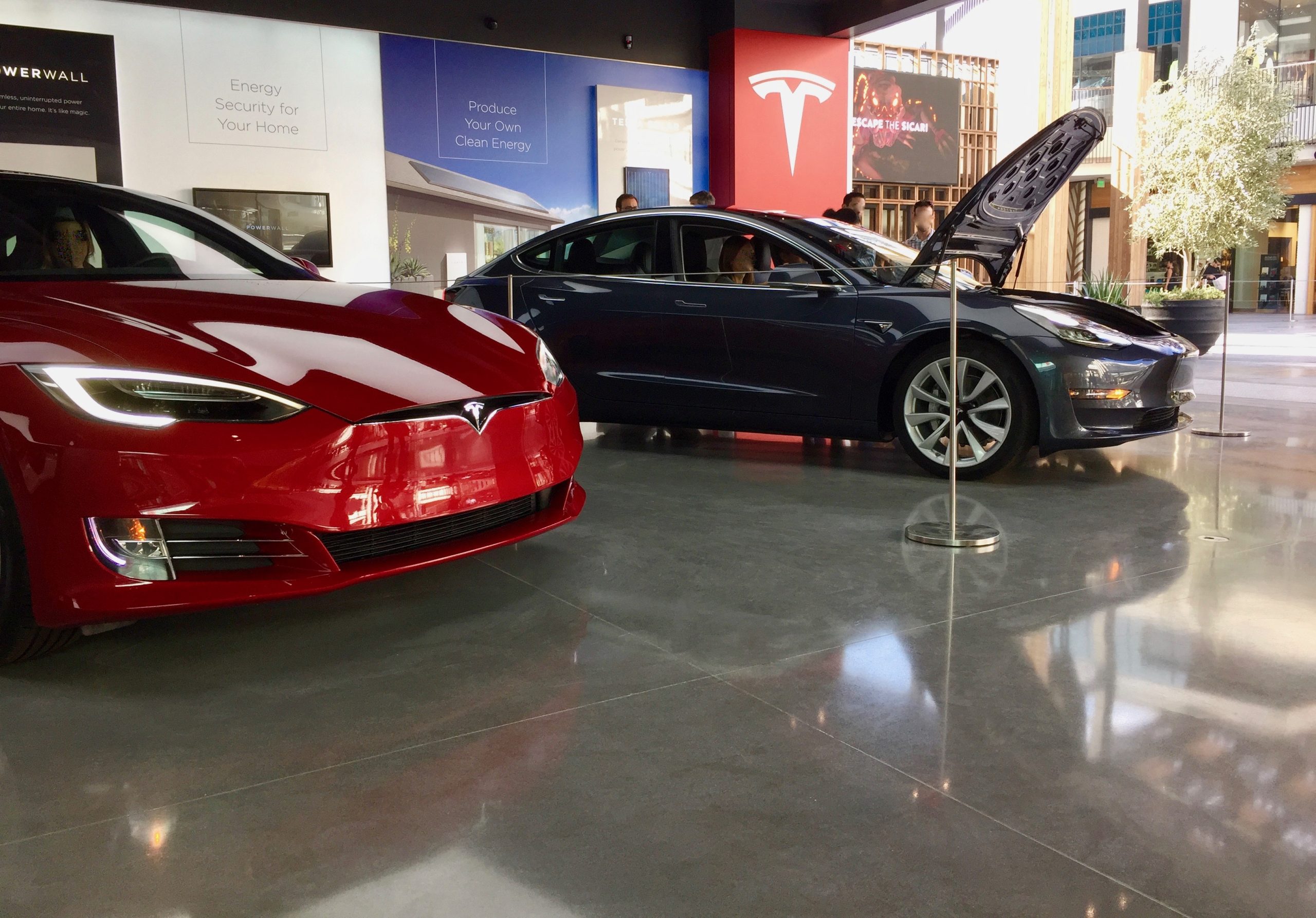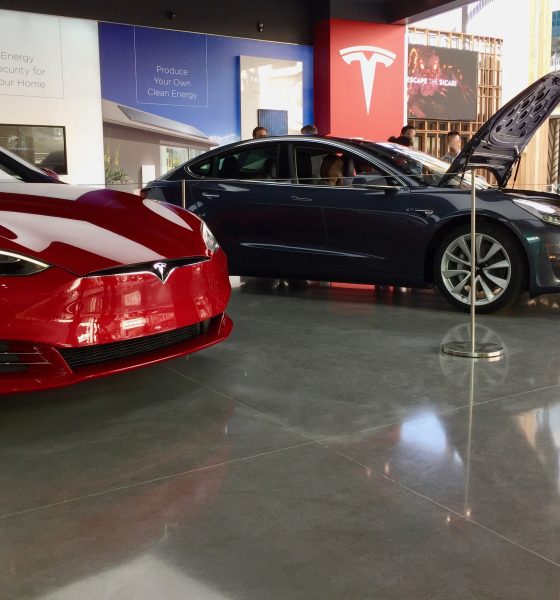

News
Tesla set to benefit as Congress considers EV tax credit extension
Tesla, General Motors and other automakers are pushing Washington for tax extenders that would extend the federal incentive for electric vehicle purchases.
Talks in the U.S. Congress over the weekend focused on the reinstatement of tax extenders that will not only benefit electric car manufacturers but those involved in biofuel and short-line railroad industries. If the Growing Renewable Energy and Efficiency Now (GREEN) Act gets the thumbs up, the cap for EV sales for manufacturers will be raised to 600,000 from 200,000 units and also reduce the tax credit from $7,500 to $7,000.
There will also be tax credits for the purchase of used electric vehicles with certain limitations such as the vehicle was used and registered in the U.S., will be sold for less than $25,000, tax credit can’t exceed 30 percent of the selling price, among others.
“Thanks to bipartisan, broad-based support, we believe the EV tax-credit extension is very well-positioned for enactment. “A large and diverse set of stakeholders — including environmentalists, public health groups, automakers and utilities — are urging Congress to act given its consequences for American global competitiveness, clean air and climate change,” said Mike Carr of the EV Drive Coalition that consists of Tesla, GM, and other electric vehicles and equipment giants.
The current tax credit is phased out when a manufacturer such as Tesla hits 200,000 vehicle sales, a cap already reached by Tesla and GM in Q3 2018 and Q4 2018, respectively. This means that those who will buy Tesla electric vehicles starting January 1, 2020 are no longer eligible for tax credits. Under the current rules, Tesla vehicles delivered on or before Dec. 31, 2018 enjoyed $7,500 federal tax credit while those delivered between Jan. 1 to June 30 this year received incentives reduced by half. Those who got their Teslas July 1 through the end of this year only received $1,875 tax credits.
Originally, the tax credit for electric vehicles was enacted by Congress in 2008 to give the EV market a boost. The tax credit is a big factor in the purchase decision of car buyers when considering electric vehicles. Aside from benefiting consumers directly by making electric vehicles — such as the upcoming Tesla Cybertruck — more affordable, a proper reform levels the playing field for vehicle manufacturers while giving consumers more options to choose from.
The GREEN Act discussion draft was initiated in November by House Ways and Means Subcommittee on Select Revenue Measures Chairman Mike Thompson and Committee Democrats.
“This bill will build on existing tax incentives that promote renewable energy and increase efficiency and create new models for technology and activity to reduce our carbon footprint. I’ve long said that if we don’t address climate change, nothing else matters as we won’t have a planet to pass on to our next generation. The GREEN Act is a critical step forward in our fight to tackle climate change head on,” Chairman Thompson said.
Of course, the lobbying of Tesla and other EV manufacturers does not go unopposed. In June, a trade association representing fuel and petrochemical manufacturers and refiners met with members of Congress to insist on how tax breaks may cost the government as much as $15.7 billion over 10 years. Meanwhile, proponents and supporters of the GREEN Act that would provide tax extenders emphasized the benefits of more electric vehicles on the road in terms of sustainability, how the industry creates American jobs, and how it helps the U.S. ensure energy independence and security.
As 2019 draws to a close, Tesla adjusted the price of the Model 3 and also sent out an email to encourage consumers to place their orders to still be eligible for the federal tax credit.

News
Tesla Giga Berlin draws “red line” over IG Metall union’s 35-hour week demands
Factory manager André Thierig has drawn a “red line” against reducing Giga Berlin’s workweek to 35 hours, while highlighting that Tesla has actually increased its workers’ salaries more substantially than other carmakers in the country.

Tesla Giga Berlin has found itself in a new labor dispute in Germany, where union IG Metall is pushing for adoption of a collective agreement to boost wages and implement changes, such as a 35-hour workweek.
In a comment, Giga Berlin manager André Thierig drew a “red line” against reducing Giga Berlin’s workweek to 35 hours, while highlighting that Tesla has actually increased its workers’ salaries more substantially than other carmakers in the country.
Tesla factory manager’s “red line”
Tesla Germany is expected to hold a works council election in 2026, which André Thierig considers very important. As per the Giga Berlin plant manager, Giga Berlin’s plant expansion plans might be put on hold if the election favors the union. He also spoke against some of the changes that IG Metall is seeking to implement in the factory, like a 35-hour week, as noted in an rbb24 report.
“The discussion about a 35-hour week is a red line for me. We will not cross it,” Theirig said.
“(The election) will determine whether we can continue our successful path in the future in an independent, flexible, and unbureaucratic manner. Personally, I cannot imagine that the decision-makers in the USA will continue to push ahead with the factory expansion if the election results favor IG Metall.”
Giga Berlin’s wage increase
IG Metall district manager Jan Otto told the German news agency DPA that without a collective agreement, Tesla’s wages remain significantly below levels at other German car factories. He noted the company excuses this by referencing its lowest pay grade, but added: “The two lowest pay grades are not even used in car factories.”
In response, Tesla noted that it has raised the wages of Gigafactory Berlin’s workers more than their German competitors. Thierig noted that with a collective agreement, Giga Berlin’s workers would have seen a 2% wage increase this year. But thanks to Tesla not being unionized, Gigafactory Berlin workers were able to receive a 4% increase, as noted in a CarUp report.
“There was a wage increase of 2% this year in the current collective agreement. Because we are in a different economic situation than the industry as a whole, we were able to double the wages – by 4%. Since production started, this corresponds to a wage increase of more than 25% in less than four years,” Thierig stated.
News
Tesla is seeing a lot of momentum from young Koreans in their 20s-30s: report
From January to November, young buyers purchased over 21,000 Teslas, putting it far ahead of fellow imported rivals like BMW and Mercedes-Benz.

Tesla has captured the hearts of South Korea’s 20s-30s demographic, emerging as the group’s top-selling imported car brand in 2025. From January to November, young buyers purchased over 21,000 Teslas, putting it far ahead of fellow imported rivals like BMW and Mercedes-Benz.
Industry experts cited by The Economist attributed this “Tesla frenzy” to fandom culture, where buyers prioritize the brand over traditional car attributes, similar to snapping up the latest iPhone.
Model Y dominates among young buyers
Data from the Korea Imported Automobile Association showed that Tesla sold 21,757 vehicles to the 20s-30s demographic through November, compared to BMW’s 13,666 and Mercedes-Benz’s 6,983. The Model Y led the list overwhelmingly, with variants like the standard and Long Range models topping purchases for both young men and women.
Young men bought around 16,000 Teslas, mostly Model Y (over 15,000 units), followed by Model 3. Young women followed a similar pattern, favoring Model Y (3,888 units) and Model 3 (1,083 units). The Cybertruck saw minimal sales in this group.
The Model Y’s appeal lies in its family-friendly SUV design, 400-500 km range, quick acceleration, and spacious cargo, which is ideal for commuting and leisure. The Model 3, on the other hand, serves as an accessible entry point with lower pricing, which is valuable considering the country’s EV subsidies.
The Tesla boom
Experts described Tesla’s popularity as “fandom culture,” where young buyers embrace the brand despite criticisms from skeptics. Professor Lee Ho-geun called Tesla a “typical early adopter brand,” comparing purchases to iPhones.
Professor Kim Pil-soo noted that young people view Tesla more as a gadget than a car, and they are likely drawn by marketing, subsidies, and perceived value. They also tend to overlook news of numerous recalls, which are mostly over-the-air software updates, and controversies tied to the company.
Tesla’s position as Korea’s top import for 2025 seems secured. As noted by the publication, Tesla’s December sales figures have not been reported yet, but market analysts have suggested that Tesla has all but secured the top spot among the country’s imported cars this year.
News
Tesla FSD fleet is nearing 7 billion total miles, including 2.5 billion city miles
As can be seen on Tesla’s official FSD webpage, vehicles equipped with the system have now navigated over 6.99 billion miles.

Tesla’s Full Self-Driving (Supervised) fleet is closing in on almost 7 billion total miles driven, as per data posted by the company on its official FSD webpage.
These figures hint at the massive scale of data fueling Tesla’s rapid FSD improvements, which have been quite notable as of late.
FSD mileage milestones
As can be seen on Tesla’s official FSD webpage, vehicles equipped with the system have now navigated over 6.99 billion miles. Tesla owner and avid FSD tester Whole Mars Catalog also shared a screenshot indicating that from the nearly 7 billion miles traveled by the FSD fleet, more than 2.5 billion miles were driven inside cities.
City miles are particularly valuable for complex urban scenarios like unprotected turns, pedestrian interactions, and traffic lights. This is also the difference-maker for FSD, as only complex solutions, such as Waymo’s self-driving taxis, operate similarly on inner-city streets. And even then, incidents such as the San Francisco blackouts have proven challenging for sensor-rich vehicles like Waymos.
Tesla’s data edge
Tesla has a number of advantages in the autonomous vehicle sector, one of which is the size of its fleet and the number of vehicles training FSD on real-world roads. Tesla’s nearly 7 billion FSD miles then allow the company to roll out updates that make its vehicles behave like they are being driven by experienced drivers, even if they are operating on their own.
So notable are Tesla’s improvements to FSD that NVIDIA Director of Robotics Jim Fan, after experiencing FSD v14, noted that the system is the first AI that passes what he described as a “Physical Turing Test.”
“Despite knowing exactly how robot learning works, I still find it magical watching the steering wheel turn by itself. First it feels surreal, next it becomes routine. Then, like the smartphone, taking it away actively hurts. This is how humanity gets rewired and glued to god-like technologies,” Fan wrote in a post on X.








